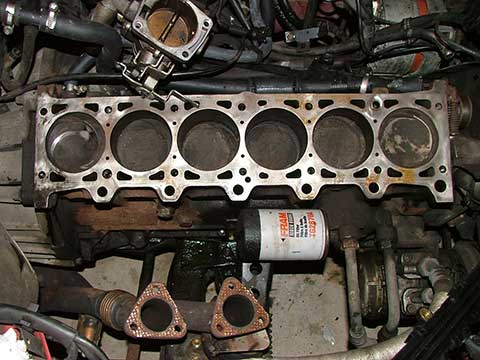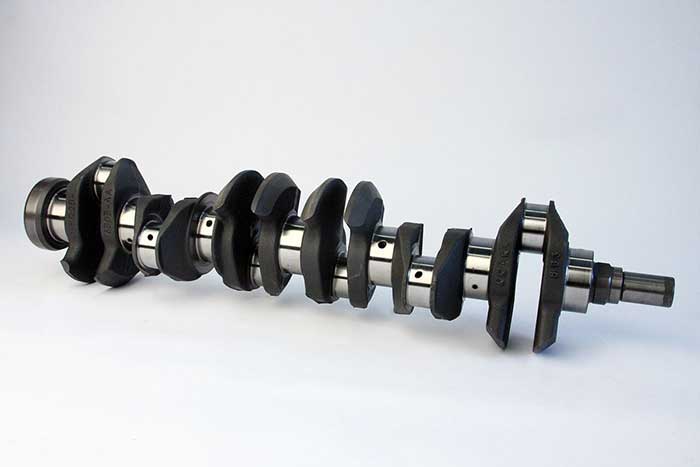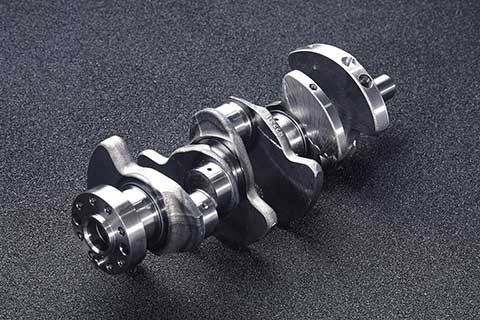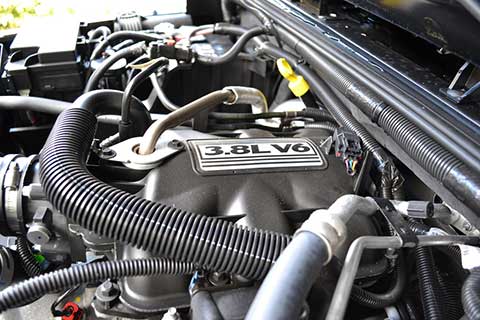Today’s cars are mostly equipped with in-line 4-cylinder engines. But there are plenty with larger engines, in 6, 8, 10 or 12 pistons, sometimes even more. Without a doubt, apart from the 4-cylinder engines, most are with 6. But they are of several types. What is the most efficient 6-cylinder engine?
Contents
Advantages of the inline 6 engine

1. Cheap and easier to manufacture
An engine block with 6 pistons in line, by design, is easier and cheaper to manufacture. The casting mold of the block, whether it is made of steel or aluminum, is a simple and easy to manufacture and fill with material. But most of the time, the fact that it is cheaper to manufacture is not found in the final price of a car.
2. Higher torque at higher engine speed
Because the pistons are aligned and the engine is longer, the 6-cylinder in-line engines produce more torque at a higher speed than a V6. This advantage has been materialized in equipping many off-road vehicles with 6-piston inline engines over time. And now, many trucks or heavy vehicles are equipped with this type of engine that needs torque at any speed.
3. Simple design
A 6-cylinder engine has only a single cylinder head, half the number of cam axles of what a V6 has, a single gasket, and an easier route through which the coolant has to circulate. Because of this simpler design, several advantages are obvious: shorter timing belt, better lubrication, etc.
4. Balanced motor by construction
Compared to a V6, an inline 6 engine is balanced by its design. The pistons circulate only on an axis, up and down, the balance being given by the ignition order. At the same time, such a well-adjusted engine has less vibration and is quieter than a V6.
Disadvantages of an inline 6 engine
1. Useless for front-wheel-drive cars
Due to its design with 6 pistons aligned inline, the engine does not allow the equipment of efficient front-wheel-drive cars. There is simply no room for its transverse mounting, next to the gearbox. BMW cars, the only ones that come equipped with such engines and have all-wheel-drive, use a driveshaft from the gearbox to the front axle, to drive them. Volvo produced cars with inline 6 and FWD, but the dynamics proved to be inefficient.
2. They have a lower speed than a V6 engine
By design, having a much longer crankshaft that spins through 7 bearings, compared to 4 for a V6, it has higher friction. The low speed is given not only by the friction inside but also by the difficulty with which the air reaches the last pistons, the engine being quite long.

3. Higher fuel consumption
Because it has high internal friction of the parts, but also because the intake is more difficult, the consumption of engines with 6 pistons inline tends to be higher than that of a V6. Modern engines, however, have solved this problem through overfilling and scheduled fuel injections.
4. More difficult cooling
Because it is a long engine by design, sometimes the last two pistons receive less water from the cooling pump, which leads to premature heating. Modern inline 6 engines now have induced cooling at both ends of the engine so that coolant reaches each piston and the internal temperature is uniform.
5. Lower torque at maximum speed
It’s hard to make a perfect engine. And if an inline 6 engine has a high torque range at low speed, when it reaches high speed it loses torque, both power, and torque, although they start at an early speed and are present most of the time, at high speed an inline 6 engine loses these advantages.
Advantages of the V6 engine

1. Suitable for any kind of thrust
Being a compact engine, a V6 can also be used on cars with front-wheel-drive, all-wheel-drive, or rear-wheel-drive without problems. There are many cars that have V6 engines and front-wheel-drive, such as Hyundai Coupe, Honda Legend, or Toyota Camry. As well, a V6 engine can be installed in the front, rear or center, while a 6-cylinder inline engine is mounted in the front.
2. Higher speeds than the inline 6 engines
A V6 engine is more compact and the block is shorter, as are the cylinder heads. And because the pistons have a smaller stroke, and also because the crankshaft is significantly shorter, they can have higher speeds than in the case of inline 6 engines. And a higher speed means increased power, which is why while trucks want inline 6 for torque, competition cars want V6 for horsepower.
3. Friction is much smaller than an inline 6 engine
The crankshaft of a V6 engine rotates on 4 bearings, not on 7 as in the case of the one with 6 pistons inline. The pistons make much shorter movements in the engine block. This means reduced friction of the internals, which leads to higher speed and faster acceleration, lower consumption, lower operating temperature.

4. Extremely compact engine
A V6 is often more compact than a 4-piston engine. Because its design is practically the same as that of a 3-piston engine, but wider at the top, this engine is preferred by most manufacturers, is versatile, and can be mounted both longitudinally and transversely under the hood.

5. Easier to over-fill
With a compact design, all 6 pistons receive air through the intake just as efficiently. Also due to the short intake, many manufacturers have chosen to supercharge V6 engines and make them extremely powerful – see the case of Nissan GT-R. And engines with 6 pistons in line can be efficiently supercharged, but with much higher costs.
6. Low weight compared to an inline 6 engine
Although it has two cylinder heads, a V6 engine is lighter than an inline 6, being compact and the block very small. This means a total lower fuel consumption and better dynamics of the car in sports mode. Also, with a small size, a manufacturer can juggle the position of a better V6 engine, positioning it to balance the perfect car.
7. Easy cooling
Thanks to a compact design, the water pump makes it much easier to handle and manages to carry the coolant equally to all 6 cylinders. In addition, the antifreeze route is shorter, so cooling is done more efficiently, maintaining a uniform temperature throughout the entire touring range and in all pistons. Instead, an inline 6 is more prone to overheating, especially during the heat.
Disadvantages of a V6 engine
1. Complex and expensive design
A V6 engine has two cylinder heads, sometimes two injector ramps, and twice the number of camshafts compared to an inline 6. This does not necessarily mean that it has low reliability, because the load on these parts is halved compared to an inline motor, but several moving parts can represent a risk of failure. In addition, manufacturing a V6 engine is more expensive.
2. Noisier engine
By design, a V6 is more unbalanced and noisier than an inline 6. Because the pistons exert forces on 4 axes: up-down and left-right. This means an extra vibration that in time can lead to problems with the internal parts.
3. Low torque and low power at low speeds
Compared to an inline 6, the V6 engine is designed for higher speeds and sharper accelerations. It does not have increased torque and power at low speeds. Whoever wants a V6 stock to benefit from all the engine power, must push the gas pedal to the bottom. And this, unfortunately, leads to higher consumption.
Conclusion
Perhaps not for nothing did BMW remain the only manufacturer of cars equipped with inline 6 engines, the rest using V6 engines. However, the Bavarian manufacturer wants to keep the tradition, nothing more, while Mercedes and Nissan gave up on the inline 6 and adopted V6 engines.
But if we have to think concretely about the advantages and disadvantages, it seems that the balance leans in favor of the inline engine because it has more torque and power, simpler design, it is cheaper, more balanced, quieter and more reliable than a V6. In turn, a V6 is more compact, more versatile, lighter, and more economical. So every engine has its goods and bads because neither can be perfect.
One thing is clear: every engine is good in its way. BMW, the only manufacturer of cars with inline 6 engines, makes sufficient financial efforts to be able to offer extremely high-performance inline engines, hence the high price of the cars sold. Instead, the rivals chose V6 or V8 engines, equip them with two turbochargers and make them extremely powerful.
In fact, the crazy race after the cost reduction led to the disappearance of the inline 6 engine from modern cars. And maybe we do not want BMW to take this step and fall prey to the economy, giving up this configuration that still has its charm.
